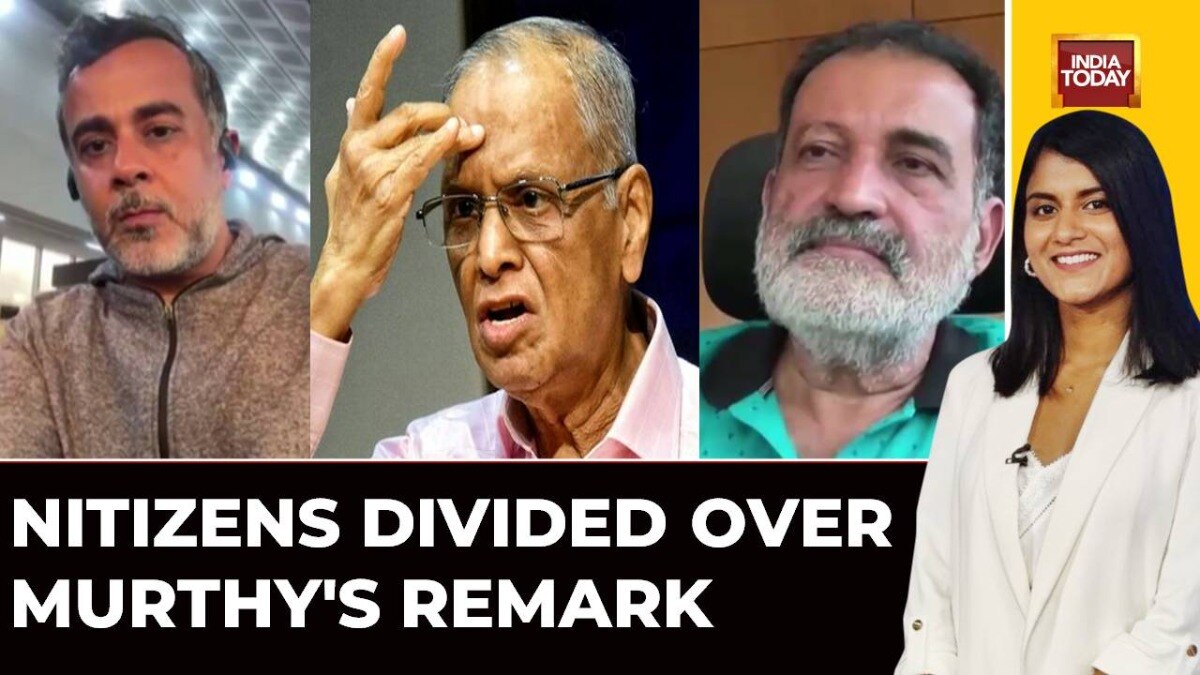


Infosys co-founder and business leader N.R. Narayana Murthy stirred up controversy with his recent statement at the CNBC Global Leadership Summit, stating that he does not believe in work-life balance and praising Prime Minister Narendra Modi's 100-hour work week. This statement received widespread criticism, with many arguing for the importance of maintaining work-life balance. However, Murthy remains unapologetic, citing the hard work of government officials as an indication of appreciation. In light of this debate, the idea of a 70-hour work week is put into perspective, raising questions about the expectations and pressures on working professionals in India.
Infosys Co-Founder's Controversial Stance on Work-Life Balance
Background:
Infosys co-founder N.R. Narayana Murthy's recent comments at the CNBC Global Leadership Summit have sparked a heated debate about work-life balance in India. Murthy stated that he does not believe in work-life balance and commended Prime Minister Narendra Modi's 100-hour work week, advocating for a "culture of hard work."
Reaction:
His remarks drew widespread criticism, with many experts, employees, and netizens highlighting the importance of maintaining a balance between work and personal life for physical, mental, and emotional well-being. Critics argued that Murthy's views were outdated and did not align with the modern understanding of workplace health and productivity.
Murthy's Defense:
Murthy defended his stance, asserting that government officials worked long hours out of a sense of duty and that employees should emulate their dedication. He also suggested that those who complained about excessive work hours may not be passionate about their jobs.
In Perspective: The 70-Hour Work Week
Murthy's comments have brought into focus the expectations and pressures on working professionals in India. The concept of a 70-hour work week, while not explicitly advocated by Murthy, raises concerns about the potential impact on employee well-being and productivity.
Top 5 FAQs and Answers:
Q1: What is work-life balance? A1: Work-life balance refers to a harmonious integration of professional and personal responsibilities, allowing individuals to fulfill their obligations in both spheres without excessive stress or sacrifice.
Q2: Why is work-life balance important? A2: Maintaining work-life balance promotes physical, mental, and emotional health, reduces burnout, improves productivity, and enhances personal fulfillment.
Q3: What are the benefits of a 70-hour work week? A3: Proponents argue that it can increase productivity, meet deadlines, and demonstrate dedication. However, there is limited evidence to support these claims.
Q4: What are the drawbacks of a 70-hour work week? A4: Excessive work hours can lead to fatigue, stress, health problems, decreased productivity, and impaired relationships with colleagues and family.
Q5: How can work-life balance be achieved? A5: Establishing boundaries, prioritizing tasks, delegating responsibilities, taking regular breaks, and seeking support from employers and coworkers can help achieve work-life balance.
Conclusion:
Murthy's controversial remarks have reignited the conversation about work-life balance in India. While some may advocate for a culture of hard work, it is crucial to recognize the importance of employee well-being and productivity. Striking a balance between professional and personal obligations is essential for a healthy and fulfilling life.

Muthoot Finance, India's largest gold loan NBFC, is launching the third season of its Sunheri Soch campaign, which aims to break myths surrounding gold loans and highlight the stories of its customers' success. With Madhuri Dixit as the narrator and supported by regional voices and 64 radio stations, the campaign showcases how gold loans can be an engine of opportunity and financial independence. The Sunheri Soch movement will also have a digital platform, sunherisoch.com, where customers can engage and share their own inspiring stories.

The Indian Airport Economic Regulatory Authority has extended the deadline for stakeholders to submit feedback on proposed airport performance standards until October 20. The authority aims to create a balanced mechanism that rewards airport service excellence while holding them accountable for lapses. This performance-linked framework will potentially affect tariff structures and service agreements across major airports in India, aligning with global best practices.

In this email, a reader expresses their frustration with the decline of dressing well in public settings. However, the writer also points out the undeniable advantages that come with dressing in a more formal and put-together manner, including better treatment from others and an increase in self-confidence. While many may argue that they have the right to dress as they please, societal norms and expectations still exist and can affect how one is perceived and treated. This highlights the power of appearance in various aspects of life, including business and success.

The Dhanteras festival proved to be a boon for Indian traders as consumers defied surging gold prices and spent an estimated Rs 1 lakh crore on the auspicious day. The Confederation of All India Traders (CAIT) reported a 25% increase in gold and silver sales, making up a significant portion of the total expenditure. Despite the economic slowdown, the tradition of purchasing gold and other items symbolising prosperity on Dhanteras remains strong, highlighting the cultural significance of the festival.

Union Railway Minister Ashwini Vaishnav, at the International Railway Equipment Exhibition (IREE), highlighted India's remarkable progress in railway modernisation, stating that under the leadership of Prime Minister Narendra Modi, the country has witnessed the construction of 35,000 kilometres of new railway tracks and electrification of 46,000 kilometres of tracks in the past 11 years. He praised the Confederation of Indian Industry (CII) for organising the IREE and urged them to think bigger and envision a global-scale railway exhibition that surpasses Germany's InnoTrans, showcasing India's growing capabilities in railway infrastructure and technology.

On Friday, the IRCTC website and mobile app faced technical issues, causing an outage and inconvenience to over 5,800 users trying to book tickets. Social media platforms were flooded with complaints as the server crashed during peak booking hours, with some suggesting the need for better technology to handle festive rush. Officials have assured that efforts are being made to restore normal operations.

In a boost for the festive season, Indian Railways has launched two special Vande Bharat trains between Delhi and Patna. These trains will run till November 17 and offer a luxurious and secure travel experience for passengers during Diwali and Chhath Puja. With stops at six important stations, these trains will cover a distance of 1,000 km in under 14 hours.

As India prepares for Dhanteras 2025, gold has already become the star of the show, with prices surging more than 50% this year and showing no signs of slowing. The combination of global and domestic factors, including safe-haven demand, central bank buying, and economic uncertainty, has pushed gold to an all-time high of over Rs 1,30,000 per 10 grams. As investors flock to add the precious metal to their portfolio, experts predict a continued upward trend, driven by lower interest rates, de-dollarisation, and geopolitical tensions.

India’s economy and markets are seeing a resurgence, with PE and VC investments soaring to a three-year high of $26 billion in 2025. The country’s growing affluence and digital transformation have spurred a luxury market boom, with high-end brands rushing in to meet the demand. The trend is supported by a shift towards larger, more strategic investments in sectors such as IT and consumer staples.

MCX December gold futures on the Multi Commodity Exchange (MCX) skyrocketed by 1.4%, reaching an all-time high of ₹1,32,770 per 10 grams. Meanwhile, silver prices dropped slightly on the MCX to ₹1,85,000 per kilogram. The surge in gold prices can be attributed to a weaker US dollar, strong spot demand, and positive global cues, making gold an attractive investment option. However, the rising prices may have an impact on shoppers this Diwali, as the cost for 10 grams of 24-carat gold has surpassed ₹1.3 lakh. Despite this, jewellers remain optimistic, as increased household liquidity and positive economic indicators continue to encourage discretionary spending.